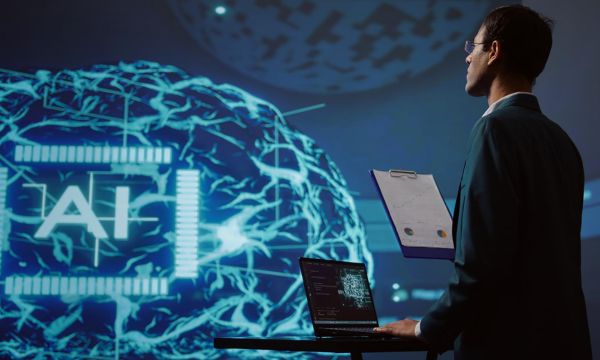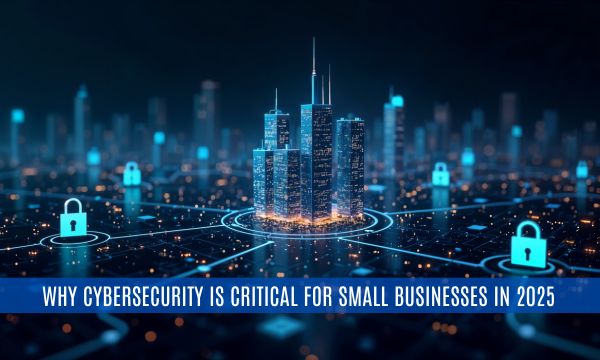
Imagine waking up on a regular Monday morning, only to find your phone buzzing with an urgent message from your security team. A cyberattack has hit your business. But this isn’t a typical breach—this is a new breed of attack powered by Artificial Intelligence (AI). The data is compromised, systems behave erratically, and there’s no time to waste. This isn't a scene from a sci-fi thriller; it's a very real risk we face in 2024. The AI not only has the power to transform business but to destroy it completely as misused by malicious actors.
AI-driven cyber threats are no longer a distant concern—they’re already here, and they’re rapidly reshaping the cybersecurity landscape. In fact, AI has become a weapon in the hands of cybercriminals, enabling them to launch attacks that are faster, smarter, and more difficult to defend against. So, how can businesses protect themselves from these advanced threats? The answer lies in a strategy that's been around for years but is more relevant than ever: penetration testing (pentesting).
Let’s take a deep dive into the rise of AI-driven cyber threats, why they’re so dangerous, and how pentesting can be the ultimate defence.
AI: The New Face of Cybercrime
We all know how AI has revolutionized industries, from healthcare to finance. But as AI evolves, so do its malicious uses. What was once the realm of science fiction is now a pressing reality: AI is being leveraged by cybercriminals to launch smarter, faster, and more devastating attacks. Here’s how:
1. Automated and Targeted Phishing Attacks
AI is no longer just about crafting generic phishing emails. Today, it can scrape the internet for personal data—social media profiles, work histories, even personal preferences—and use this information to create highly convincing, tailored phishing emails. Imagine a hacker using AI to craft an email that looks like it’s from your CEO, complete with an urgent request for a money transfer. It’s personalized, it’s convincing, and it’s automated, making it difficult for traditional defences to detect.
2. Deepfakes and Impersonation
AI-powered deepfakes are another tool in the hacker’s arsenal. Cybercriminals are increasingly using deepfake technology to create realistic fake videos or voice recordings. Imagine a deepfake of your CFO instructing your finance team to wire large sums of money to a seemingly legitimate account. The authenticity of the message is nearly impossible to question, and it could lead to severe financial losses.
3. Zero-Day Exploits with AI Precision
AI allows attackers to rapidly analyze vulnerabilities in software, finding zero-day exploits faster than human hackers could ever dream of. These vulnerabilities are often hidden, unreported, and unknown to even the software vendor. The AI can exploit these weaknesses at an alarming speed, launching a devastating attack before anyone has a chance to respond.
4. AI-Driven Malware
Traditional malware is increasingly easy to detect with modern security tools, but AI-powered malware can evolve. It learns to evade detection, adapting and changing its code every time it’s caught, making it a moving target for antivirus software. It’s not static—it’s dynamic and highly evasive.
Why Traditional Defenses Won’t Cut It?
Let’s face it: traditional cybersecurity measures, like firewalls, antivirus software, and intrusion detection systems, were never designed to combat the kind of advanced, evolving threats we see today. These systems rely on known signatures to identify attacks—an approach that simply doesn’t work when AI is behind the offensive.
Think of it like trying to stop a swarm of mosquitoes with a single swatter. You can swat one or two, but the rest keep coming, adapting to your moves. This is how AI-driven threats behave—they learn, adapt, and outpace traditional defences.
So, what can you do to level the playing field?
Pentesting: Your Shield Against AI-Powered Cyberattacks
Penetration testing, also known as ethical hacking, is one of the most powerful tools in the fight against AI-driven cyber threats. By simulating real-world attacks, pentesters can uncover vulnerabilities in your systems before hackers do, providing you with a proactive approach to cybersecurity. But how exactly does pentesting help you defend against these sophisticated AI attacks? Here’s a breakdown:
1. Simulating AI-Powered Attacks
Pentesters are skilled in using AI and machine learning tools to mimic the tactics used by cybercriminals. By running simulated attacks that incorporate AI-driven techniques—such as automated phishing, deepfake impersonation, and rapid malware deployment—pentesters can test how well your security measures stand up to these cutting-edge threats. These simulations give you a real-world preview of how your systems will perform under AI-powered attack conditions.
For example, pentesters might craft an AI-driven phishing campaign that evolves based on your company’s response, mimicking the adaptive nature of modern threats. This allows you to see firsthand how your employees and security tools react to increasingly sophisticated attacks.
2. Stress Testing Your AI Defenses
Many companies have already implemented AI-based security systems to detect anomalies, identify malware, and prevent data breaches. But how well do these systems hold up under real-world attack scenarios? Pentesting can help stress-test your AI-driven defences, ensuring that they can handle the evolving nature of AI threats. This includes evaluating whether your AI security systems can detect and block attacks like AI-powered malware or deepfake impersonation, or if they’re vulnerable to being tricked by sophisticated tactics.
3. Uncovering AI-Driven Vulnerabilities
AI thrives in environments with large attack surfaces, and the more entry points a business has—be it through cloud infrastructure, IoT devices, or remote employees—the greater the risk. Pentesting helps identify these vulnerabilities before cybercriminals can exploit them. For instance, a poorly configured IoT device or an outdated cloud storage system could become a gateway for AI-powered malware to infiltrate your network. By simulating attacks, pentesters help you find and close these gaps, reducing your risk exposure.
4. Training Employees Against AI-Powered Social Engineering
One of the most dangerous aspects of AI-driven threats is its ability to manipulate human behaviour. AI can craft highly convincing social engineering schemes, including fake emails, phone calls, or even video messages. Pentesters use social engineering tests, including AI-powered phishing campaigns, to evaluate how well your employees respond to these kinds of threats. By testing your team’s ability to recognize and respond to AI-driven attacks, pentesting helps enhance human defences—often the weakest link in cybersecurity.
The Challenges of Defending Against AI-Driven Threats
While pentesting is a critical part of your defence strategy, there are several challenges to address when it comes to AI-powered cyber threats:
1. Speed and Scale: AI-powered attacks happen at lightning speed, which makes defending against them even harder. AI can automate tasks like scanning for vulnerabilities and launching attacks, all while learning from every move you make.
2. Complexity of AI Algorithms: AI algorithms are often opaque, making it difficult to understand how attacks evolve. This complexity requires businesses to constantly adapt their defences, a task that can be resource-intensive.
3. Resource Constraints: Effective defence against AI-driven attacks demands advanced tools, skilled professionals, and continuous testing—all of which require significant investment, especially for smaller organizations.
The Bottom Line: Don’t Wait for the Inevitable
AI-driven cyber threats aren’t a futuristic concern—they’re happening right now, and they’re becoming more sophisticated by the day. Traditional security measures can no longer keep up. But with penetration testing, you can stay ahead of the curve, identifying vulnerabilities before attackers can exploit them.
Ask yourself:
* Is your organization prepared for the rise of AI-powered cyber threats?
* Do your employees know how to recognize an AI-driven attack?
* Are your AI-based defences ready to face the challenges of 2024’s evolving cyber landscape?
In the world of cybersecurity, the only constant is change. AI is not just reshaping the way attacks are launched; it’s reshaping the way we defend against them. The time to act is now. Embrace pentesting, and take control of your cybersecurity future before AI-driven threats take control of yours.
Because in the age of AI, the best defence is to think like the attacker—and stay one step ahead.



